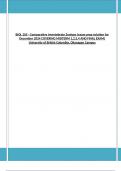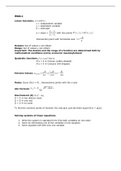Tentamen (uitwerkingen)
BIOL 205 - Comparative Invertebrate Zoology (exam prep solution for December 2024 COVERING MIDTERM 1,2,3,4 AND FINAL EXAM) University of British Columbia, Okanagan Campus
- Vak
- Instelling
BIOL 205 - Comparative Invertebrate Zoology (exam prep solution for December 2024 COVERING MIDTERM 1,2,3,4 AND FINAL EXAM) University of British Columbia, Okanagan Campus Midterm 1: Invertebrate phyla including Porifera, Placozoa, Cnidaria, Ctenophora, Platyhelminthes, Acoela, Clade Gnathifera, ...
[Meer zien]




